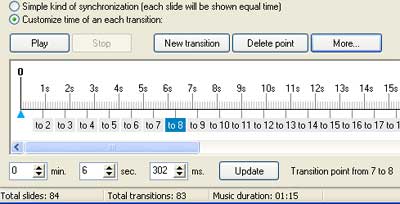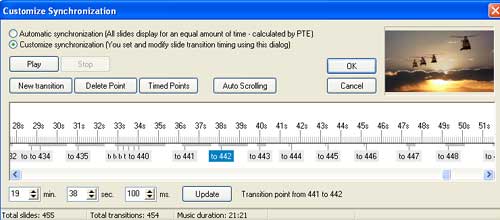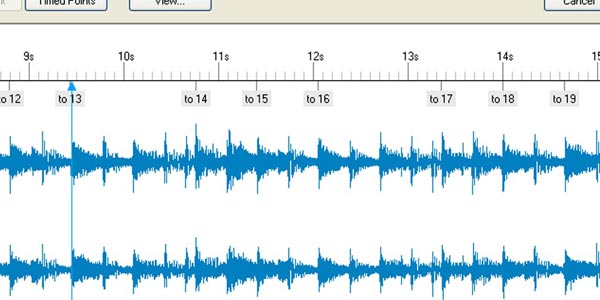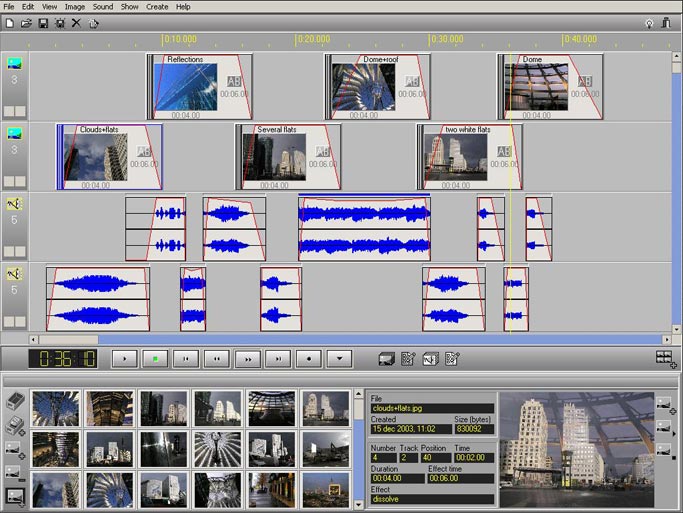
Within
the last few years there has been an increase in the number of programmes enabling
one to show sequences of images or presentations on the computer. I hope here
to keep you upto date with the pros and cons of the various programmes now available.
First a bit of history !
Having spent a fair number of years dragging around
the country 8 projectors, control devices, hi-fi etc. to do slide tape shows the
idea of just using a laptop and video projector seemed a good idea. However it
is only recently that projectors have become affordable and laptops have become
powerful enough.
One of the first, if not the very the first programme that
looked promising was Image Q from Image North
of Ontario, Canada. Best known for their work with a caption generator programme
(Inscriber) for Targa boards and the video market, Image North's multimedia package
Image Q first worked on DOS and Windows 3.11 systems in the early 90's, with later
versions working on Windows 95 and NT4. Unfortunately Image North lost interest
and they failed to update it for the latest operating systems.
One of its blessings
was the fact that one did not need a high spec machine to run it and the dissolves
were adequate though not perfect. Timing was difficult to achieve due to the lack
of a time line but it was easy to use and I still use in in certain circumstances
for presentations. It does allow you to add AVI's and FLI's . Text addition is
fairly basic.
I had high hopes of Director,
a Macromedia product that can be used on both PC and Apple Mac platforms but I
found the fades between images were very poor so whilst it was very powerful in
many ways it was limited as an option for slide-tape and far too expensive too.
A
programme that is popular for doing presentations in commercial circles is Powerpoint
but again its dissolve transitions are very basic and to be honest pretty useless.
So that is a nonstarter.
A more economic programme that will work on both Mac
and PC is Kai's Power Show once looked after
by Metacreations . Now under the Scansoft banner you can get updates to v1.1 from
their web site - http://www.scansoft.com
However
like all Kai products the front end is way over the top - like most of the effects
with the programme. It is not easy to sync a sequence accurately to a sound track
and to be fair it is really not designed for that. You
can import text and sound.
The remainder of the programmes only work on the
PC so Apple Mac users are left in the cold
Another
programme that I have tried is Illuminatus Opus
from Digital Workshop -
http://www.digitalworkshop.com
This is a full multi-media product with many options but it is not a simple programme
to use and its dissolve effects are not as good as some others. I found the fades
were jerky at times.
Mediator from
MatchWare is a similar programme but I wasn't all that taken with the demo version.
Its dissolve transitions were very basic and not all that smooth
Another
programme to miss is Medi@show from
http://www.cyberlink.com.tw. The downloadable demo is useless for trial
purposes. You are limited to ten images unfortunately. The front end has similarities
to Kai Power Show with lots of wasted space. There is a basic time line with no
indication of timing or syncing with the soundtrack. You can control the duration
of a slide but only to the nearest second and the maximum length of a transition
is 10 seconds. You cannot set the timing in tenths of a second. Some of the transitions
are quite innovative but alas you would rarely use them in practice Iím afraid.
The fade transition is quite smooth however and for very simple sequences without
requiring accurate timing Medi@Show should be OK.
Advanced Slide Show from http://www.gold-software.com/slideshow.shtml
is another one to miss.It comes in several parts, the demo lasting 60 days with
constant reminders coming up on your desktop as to how long you've got left !
Alas this one does not fade at all and each slide changes to the background colour
before moving to the next slide. You have little control over anything! I am afraid
this is a really basic programme - a bit like showing slides on one Carousel projector.
Xatshow
from http://www.xatshow.com
is slightly different. But the bottom line is that there is little or no control
of the transitions and timing etc. so its not one that can be used for Digi-View.
Another
simple slide show programme is PICShow2 from
http://www.pegasusimaging
.com
Lots of transitions but no control of the fades or proper
sync.
ShowBiz from Arcsoft is better than most and has really good points. A nice feature is
its time line which has 2 audio channels with the sound shown graphically, perhaps
to help you sync the image to the sound. However in practice I doubt whether it
is accurate enough on checking it with various sound tracks. You can enlarge sections
of the time line to give more detail ( x4) which helps . The time line has two
sections -the storyline is where you import the images or video clips and set
the transitions (a very wide range) and duration of image and transition.
At the bottom of the storyline is a line showing a time scale which automatically
adjusts when you add or take an image away. Remember with this programme unlike
several others, the duration of the slide also includes the transition time. The
timeline is where you see both image and transition along with any text or effects
and the audio. You can see an example below

Above
is an example of
the graphic display from a sound programme of the same sound track as the one
shown in ShowBiz. It would not be too hard to use the music programme to note
the time in seconds of important points and then use this information to set change
points in your main image sequencing programme.
In
ShowBiz the playback on the small preview screen is not at all bad but when played
at full screen (which we require ) the faults start to appear with jerky dissolves
and inaccuracies in sync. There did not appear to be any way of saving this 'real-time
display' . As the programme is designed more as a 'video' editor you can save
it in several ways -e.g. Quicktime Movies *.mov ; Microsoft AVI *.avi ; MPEG 1
*.mpeg ;
You can choose both size and types of compression. Remember full screen
AVI's can be big files .
A
relatively new French programme is GlobFx and
a downloadable demo can be obtained at
http://www.globfx.com. This is a powerful and useful inexpensive programme
but has a major drawback. It works on specific graphics cards rather than fast
processors so unless you have the latest cards with upto date drivers with at
least 32 megs of video memory forget it. As you can see below from the section
of the front end of Globfx the real-time preview is quite large and you can run
the preview from any point in the timeline. You can as many tracks as you like
but the more you make visible the smaller the preview becomes so 4-6 tracks is
enough for most purposes. The audio track does not have a visible indication of
the sound ( as yet ).
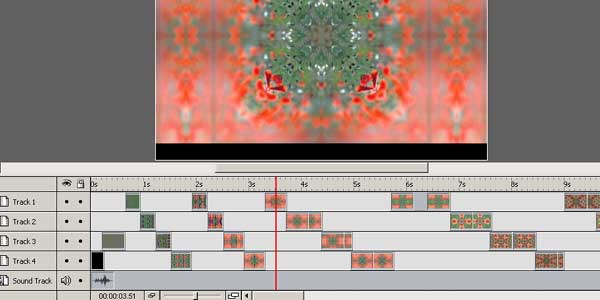
Unusually
the only transitions are the cut and the fade - yes you read it correctly, no
page turns, push - ons etc. etc. However you do get almost unlimited control over
the opacity, timing and type of dissolve. Another very useful advantage is that
you can apply special effects to individual images. Some of them are a bit over
the top from our point of view but a gentle zoom in or pan of images could be
an welcome addition to the armoury.Images can be positioned and resized to make
up a type of multivision presentation. Text can be inserted and animated with
the motion or special effects and for those into animation it also possible to
insert a sequence of images ( ie from a 3D programme). If the time between images
is cut right down the animation plays almost as real time. Because the programme
is relying on the amount of video memory there is always going to be a limit to
the number of images or effects so you will have to experiment.
You can export
in a number of ways - as a GlobFx movie - an .exe file which will play on a PC
with a similar graphic card (important) or as a GlobFx Movie that will play back
on GlobFx player ( .gbx) - similar graphic card required to run the Player. So
distribution of the end result is a problem.
It can also be exported as an
AVI file specifying the size, frame rate and compression etc. It would appear
that all work on this programme has come to a grinding halt which is a shame.
Perhaps they have lost the software engineer who was working on it. I will be
checking out the quality of DVD's made with this programme later.
Last
but by no means least is PTE (Picture-to Exe) an
inexpensive Russian programme that appears to be the favourite at the moment.
In comparison to the last two it is a simple programme but one that it improving
all the time . You can download a demo from http://www.wnsoft.com.
It first grew attention to itself by having such smooth dissolves and its
ability to set transitions and the duration of images to fractions of a second.
Its front end is different to the others. In early versions there was no time
line and on the left was a list of the images - no thumbnails . The images are
then added or dragged across to the image list. Here the image must be chosen
then customized in a special menu which sets the duration time and type and time
of transition for that image. In this menu you can also add individual sound bites
or add a sound track at the start.
When you have added a few images you then
run the preview to see how the programme syncs. You can then adjust the timings
accordingly. When you have completed the programme and don't forget at the moment
you have to keep running the preview to get the sync right.
This can be tedious
if you have a long programme and you just want to tidy up the last few images!
Hopefully
a future release will enable us to run the preview from any point in the sequence.
You
can finally save the preview to an exe file which will play on any PC. The trouble
is if you want accurate sync there must be some compatibility in processors between
the machine the sequence is recorded on and the PC it is played back on. The designer
is working hard on improving the syncing and a recent beta release incorporated
a simple time line feature. It is fairly basic at the moment but one hopes for
more. At the moment it can give very good results when played back on the same
or similar computer and I have managed sync on twenty minute programmes containing
many important sync points - see later. A
few general points on putting together and showing a sequence. The original images
will come from either existing slides , negatives , prints or nowadays images
from a digital camera. The resolution of these varying sources will differ greatly
in size and although it is possible to use say 2560 x 1920 jpeg images from a
Dimage 7 digital camera in PTE the .exe size will rise rapidly and soon become
impractical. You really have to balance size and quality and consider how your
'show' is to be seen.
Medium compression jpegs of 1024 x 768 are a reasonable
compromise. Forget using .wav files for the audio. They are far too large. Transfer
them to mp3 - try dBpowerAMP Music Converter - http://www.dBpowerAMP.com.
Many
users will just be happy to play their sequences on their monitors or TV's and
the output size of 1024 x 768 (XGA) will be fine. As far as video/data projectors
are concerned as prices come down in the growing market the lower priced ones
have a 800 x 600 output. However there are some budget 1024 x 768 ones becoming
available. For a small group of people in subdued lighting conditions a brightness
of about 1000 lumens should be OK. You also need a contrast ratio of at least
400:1. If at all possible it is best to try out your output with different projectors
before buying.
When putting the sequence together the first consideration will
be the format. Here are some possibilities- standard 4:3 TV 800 x 600 or 1024
x 768 --- wide screen 16:9 1024 x 576 ---
very wide screen 800 x 286 3:1 ratio.
Within
any of these formats you could either fill the screen or use smaller images using multi-image techniques.
Once the format is decided then you have to gather together your images from varying
resources. If you are going to fill the screen then it looks much better if all
the images are all the same size. To achieve this you could use either Photoshop
or Paint Shop Pro. Both have crop tools that can be set to the required size.
You then move the crop tool around the image to get the best composition. Below
is the Photoshop display which darkens the area excluded from your choice. As
you move the tiny squares at each corner so your choice will change but the resultant
size of your crop will 1024 x 576 no matter what section of the original image
( 3496 x 2376), scanned in from the slide, was decided upon. In Photoshop 6 the
crop size is set at the top of the screen. In Paint Shop pro you have to go into
tool options and crop settings.
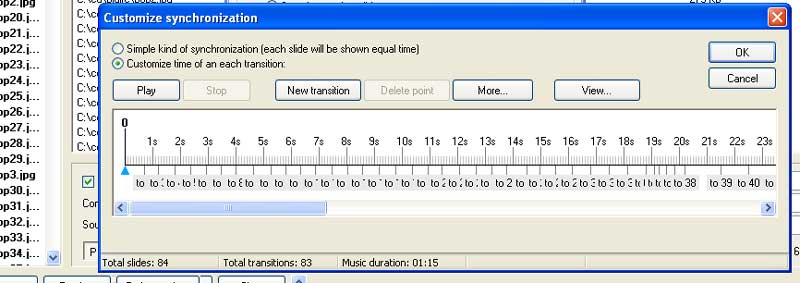
Above
shows the time line of PTE v 3.7 beta 3. After first adding the sound track in
the music section of the project options you then click the play button and click
the new transition button every time you want the the change to take place, having
first set the type and duration of the transition in the custom menu.
Any
adjustments can be made by clicking on the 'more' button and altering the time
in the boxes provided. As you can see you can add or delete transition points
also.
Remember adjusting one of the points will not automatically adjust any
of the others.
PTE
is not perfect and there are a few things I would like to see that would help
in programming complex sequences.
1. Floating menus would help.
2. The ability
to run the preview from anywhere in the sequence is essential- this is now sorted
3.
Thumbnails in the timeline with the ability to zoom into 2 and 3 second segments
when there is a lot going on would be helpful.
4.
A waveform view of the sound track would be useful in editing transition points.
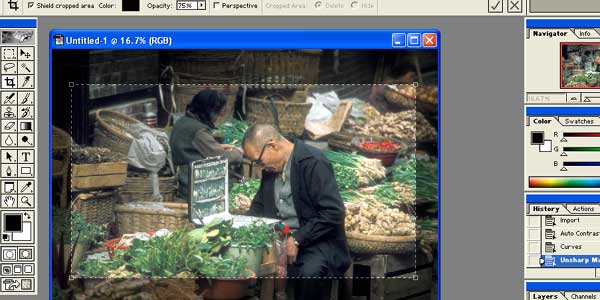
Having
decided on your piece of music or sound track then you have to put your newly
resized images in order. In traditional slide - tape this is where the lightbox
came in. The slides were placed on the lightbox and it was easy to edit them into
the correct order to match the sound track or feel of the music by matching the
colour or shapes in the images.
However though there are lots of computer programmes
that will show you thumbnail views of your images, moving them around by using
the mouse is a different matter. I have discovered that the demo CD of the
Wings software - http://www.stumpfl.com
has a section called 'Picture Pool' in which you can
move images around with your mouse. The thumbnails can be set at different sizes
and you can add the file name if required - very useful. You reach it by opening
a new project and under the picture menu you will find 'Picture Pool'. Right clicking
on a space will enable you to load in images. Warning !! In doing this the programme
makes BMP versions of the jpegs and 192 files ( smaller thumbnail files) These
of course can be deleted later when you have sorted the images. A simpler solution
for those running either Windows 2000 pro or XP is to set the directory with the
images in Windows Explorer to 'thumbnails'. You can then move them around with
the mouse. However in the Wings option you see more images to edit .
The Wings
software is designed with the Stumplf system of multi-slide projection. You design
the sequence on the computer first and the instructions are passed via cable to
the various slide projectors. However I have just heard that the latest software
from this company - Wings Platinum is
designed to work with video projectors as well as
slide projectors with a serial port such as the latest Kodak or Leitz. There is
little detail in English on their web site at the moment. Below is a grab from
the German demo, downloadable from the German section of their web site. As you
can see the graphic display of the sound is excellent and the dissolves can be
tailored in a similar way to the sounds in Cool Edit.There will be several modules
to the programme (including audio and video) when it is finally released. Work
is in progress now on a sound track module so eventually you will be able to mix
your sound track to match the images etc. It is going to be some months before
the English version is available but I will keep you upto date with progress.
As I understand it at the moment the export file will be an AVI with the latest
Mpeg4 codecs to give maximum quality and good compression. English version is
now out. It is going to cost about £100 per module. More news soon. 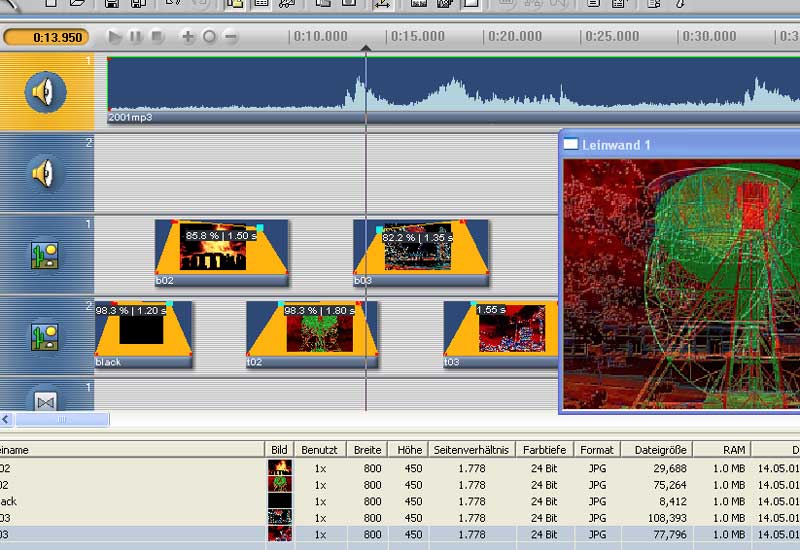
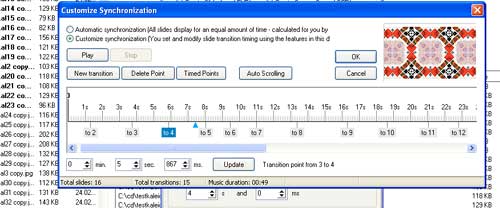
The
latest version of PTE - v4.0 beta2 enables you to see the transition effect in
the picture area of the time line menu. This is a great improvement and you can
now preview on the timeline from anywhere and see the duration of the transition
as a bar between each image on the time line. You can now run the preview from
any slide and zoom into th time line.
Another
new programme which has a very limited use is Imagematics Stillmotion Creator
- it costs 99 dollars for a basic version and I think is far too much for what
it will do. The downloadable demo will only save to a swf file (for the web).It
does similar image movements as GlobFX by zooming, panning etc and
you can fade between images . However there are limits, even with the full programme
- 64 images and 9 minutes duration of programme. The product difference between
the three modules are the output formats supported and I can only see it be used
for 'animations' on the web. The preview panel does not show dissolves but does
show zooms and movements etc.
For
those that use Cool Edit for producing sound tracks the latest version - Cool
Edit Pro 2 has some excellent improvements, one of which is the ability to add
a video track. This is helpful for GlobFx users that save as AVI files. You would
be able to add any spot sound effects or commentary before putting back into GlobFx.
Yet
another new programme to have a look at is - Slide show to Go by nightwatch software.
-www.nightwatchsoftware.com
. It
has a useful browser and a range of trasitions. The sync possibilities are very
basic at the moment but it not expensive to register and there is a 30 day download
verseion to try on the website already mentioned.
This
the latest view of the time line in PTE showing the transition duration. To show
a small duration on a cut you will need to set a short duration for the slide
on the main menu.
Version
4 full version has just been released -March 11th - you can now zoom into the
time line and run the full preview from any slide.
The
latest
version
of PTE ( v4.2 beta2 ) - Dec 2003 has the ability to save as an AVI file which
can then be recorded onto a DVD with the right software. Initially I had several
problems with the PTE codec not being recognised but now I have managed to burn
three DVD's each with about an hours worth of sequences. The method I have used
is as follows. I run PTE and load the first sequence. I then save the sequence
as an AVI using the new button marked below.
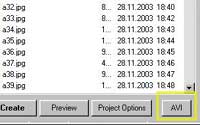
I
then opened Ulead DVD Factory 2 and added the avi file just saved in PTE. Incidently
it is important NOT to close PTE having saved the AVI. However having just added
the AVI file to the Ulead programme I then close it and run Sonic MyDVD which
came with my external Sony DVD recorder (RW DRU-500a) I then load the PTE AVI
file into the Sonic software. This is then minimised.
I then opened another version of PTE and the next sequence. I save this as an
AVI file as before and then reopen the Ulead prog to load in the new PTE AVI file.
I immediately close the Ulead prog and load this second PTE AVI file into the
maximised Sonic programme. I again do not close down the PTE sequence.
Having
gone through this routine several times now it appears to work and gives me excellent
versions of my sequences on DVD which play well on both the PC and TV. It could
be because I am using more than one CD recorder on my PC (both internal and external)
the PC is becoming confused - like me often! - and while the Ulead prog loaded
all the AVI files in OK it fell over when asked to code them preparatory to burning
the DVD. On the other hand when using the Sonic programme on its own sometimes
it would load one or two AVI's Ok but then refuse to recognise the next one! Wierd!
I
am also looking at Mobjects, a programme that is similar to Wings Platinum. It
comes from Germany and has several interesting features. Like Wings its background
is in controlling old heavy projectors (remember those!) You can download a demo
version from http://www.mobjects.com/software/hdr_actual/m_li2048.exe.
As well as multiple image tracks you can pan , rotate and zoom images. I will
be posting screen shots shortly.
Since
the above little problems I now imput the PTE AVI file into TMPGEnc Plus (http://www.pegsys-inc.com)
and then use TMPGEnc DVD Author to do the DVD's. The quality is excellent.
The
latest version of PTE v 4.30 has a lightbox - hurrah! You can switch between the
lightbox and the main view by pressing f3 and f4. There is an excellent way of
resizing the images in the lightbox by moving a slider - brilliant. You can add
to your list by using the add button or by double clicking the picture and the
file name then becomes highlighted. There are two more innovations . On the time
line in the customize Sync area you can now superimpose a graphic display of your
audio track to help get exact sync and secondly the slide list menu can be moved
to the bottom of the screen and you can now see the images if you wish. This will
be really useful . The number of images will vary according to where you set the
horizontal bar between the various menus. You can have from 4 to 18 depending
on the height of the menu.
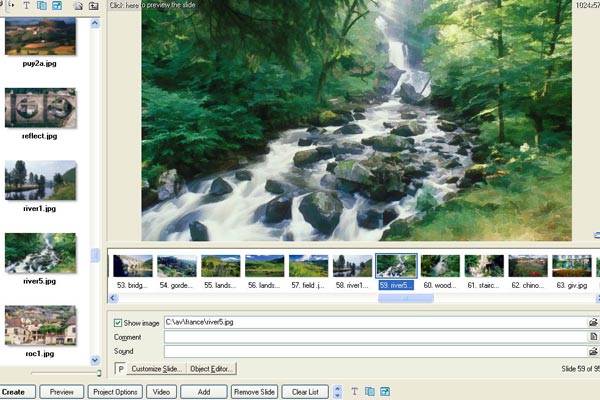
On
the left is the new look of the PTE front end showing thumbnails of the image
list vertically on the left and thumbnails of the sequence pictures below the
individual image. You can switch to the old way should you wish.
This
shows the new graphic audio display of PTE .You can now match exactly the slide
change with each beat of the music if you wish.
A
new exiciting programme is due very shortly from Holland. Called D!G!Fects,
it is similar to Wings and Mobjects rather than Showpro or PTE. It will have multiple
audio and image tracks and each image will have extensive masking, panning and
zooming effects in addition to saturation , lightening and darkening controls.
Full control is available for both audio and image transition curves. Below shows
the front end of the programme.
Due
to illness the launch of D!g!Fects has had to be postponed.
As soon as I get
any more news I will post it here.
Another
multi-layer AV programme is ScreenAV. Similar in many ways to Wings, MObjects
and D!g!fects it has several versions from a Lite 3 layer starter to a mult-video
projector professional version. They all have something in common. All images
are PRE-loaded.
The
full version of PTE ( 4.40 ) has some nice changes. On the time line you can now
directly vary the image change rates by dragging the edge of the grey band with
the mouse. You can also more easily move images around on the time line and there
are some new transitions -curling page turns. The image zoom and pan feature is
likely to come in the future - probably version 4.5.
May
2nd 2006
The new version of PTE has now been available in beta form for a few
days now and it looks very exciting. It is PTE v5 b1 and below you will find a
demo sequence using this new version. It is quite large -over 36 megs so I may
have it available for only a limited time as the traffic on this web site is very
high at the moment - over 1800 visits a day! In the sequence are a large variety
of sizes from 14,000 x 1200 downwards. I will be posting more info in the next
week or so
March 2017
The final version of PicturesToExe Deluxe 9.0 is now available
includes the use of video and many more improvements
http://www.wnsoft.com
I
hope to put together over the next few weeks more information on doing sequences
on PTE - so watch this space. Sorry about the delays but I recently got a D70
and have been playing with the new toy!! see coverage here - http://www.rtfract.com/d70.htm.
New
version of Showpro 2 looks good at first glance. Includes possible pans and zooms
of images.
There is also another mystery programme in the pipline that does
look interesting. More details when I can reveal more!
A
newish programme from Photodex.com is ProShow which can also save to DVD and gives
reasonable quality. Version 2 promises to have zooms and pans! I await with interest.
www.photodex.com
Just heard about the passing of Sir George Pollock who was one of the early pioneers of audio visual and an excellent photographer. He was a past President of the RPS and I was fortunate enough to have known him and his wife Lady Doreen for many years. There is an excellent obituary
HERE 





